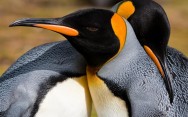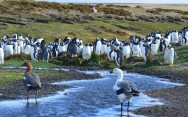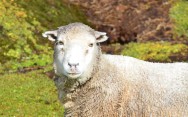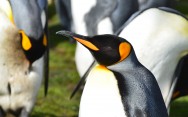King Penguins (Aptenodytes patagonica Patagonicus)
At the far end of Volunteer Beach lives the Falkland Islands largest colony of King Penguins to inhabit the islands. In 1769 Thomas Pennant, who brought the first specimen away from the Falklands, called it the ‘Patagonian Pinguin’. Since then they have grown in number to an estimated 1000 birds at Volunteer Point who lay around 500 eggs each year. Living happily alongside the Gentoo and Magellanic penguins they are certainly majestic in looks and stature.
The adults stand tall reaching heights of 85-95 centimetres making them the 2nd largest penguin in the world. They stand out with bright orange/yellow features on their upper chest, tear drop shaped markings by their ears and on the bottom of their beaks. The rest of the head, the wings and the tail are black, while the back is bluish-grey with a silvery shimmer, and the belly is white.
With stiff wings, they look funny walking, but the design helps them reach speeds of 12km per hour with ease through water. The wings/flippers are useless for flight in the air but in the water they look very similiar to birds in flight. The smooth layer of feathers allows for a layer of air not only ensuring buoyancy but also keeping the birds warm in colder waters.
They feed mostly on fish by pursuit diving regularly to depths of around 50 metres but will also eat Cephalopods. King Penguins have been recorded to dive at depths up to 322 metres (1056 ft). Weighing in at an average 15kg they lay eggs only one at a time on average 2 eggs every 3 years.
The Falkland Islands King colony is the most Northern colony in the world, and by far the easiest to get access to with air and sea facilities. South Georgia, 864 miles South East of the Falkland Islands is only accessible by sea and currently has colonies exceeding 500,000 King penguins.
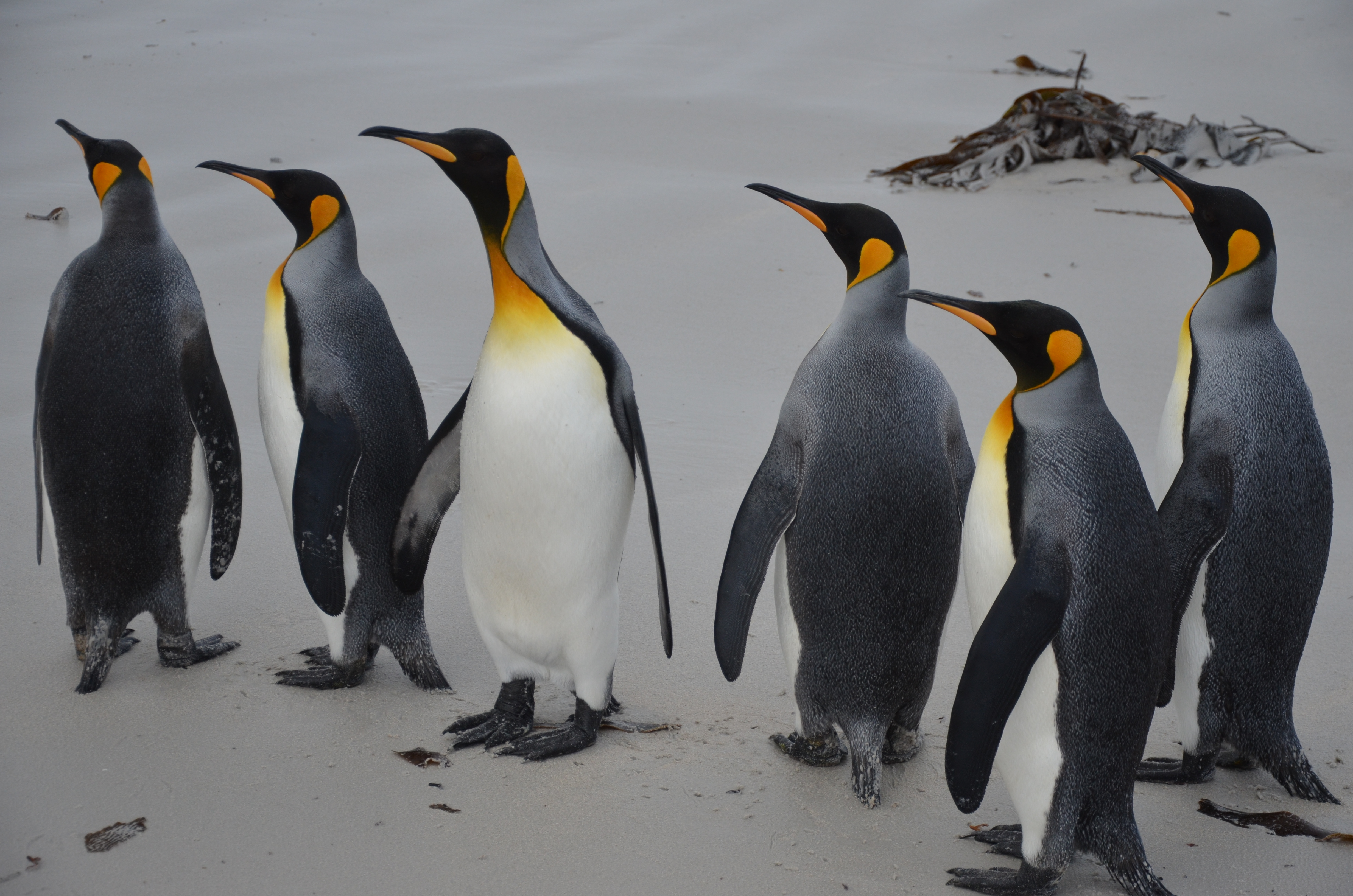
Unlike other penguins, Kings don’t make a nest or even live in burrows. Instead, they pack together in their colony, carrying the egg on their feet covered by a flap of abdominal skin called the brood patch. It is looked after this way for around 2 months being passed from one parent to the other every week to 2 weeks. When relieved of parental duties that King then heads off to sea on an extended food foraging trip.
Once hatched, the chick continues to be protected on their parents feet for another 30 – 40 days by which time they are usually large enough to be able to regulate their own temperature. Around 3 months after they hatch, the chicks reach 90% of adult weight. Winter can be a harsh and hungry time for the chicks as the parental visits become fewer and further between. They huddle together in creches, living on their fat reserves until the parents return about every 4 – 6 weeks but can be as long as 5 months.
The fluffy brown down that keeps the chicks warm in the air has the opposite effect in the water so they have to wait until they are fully fledged before being able to go to sea and fend for themselves. They won’t return to breed until they are at least 3 years old. King penguins are known to live to up to 30 years old.
The King Penguins currently remain tolerant of tourists to Volunteer Point as long as the tourists respect the environment and don’t enter or disturb the colony. Stay still and they may approach you, remember, you are guests in their home.


